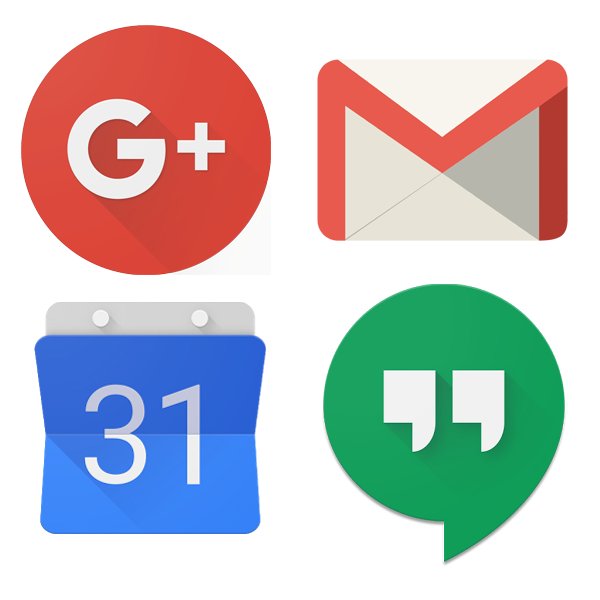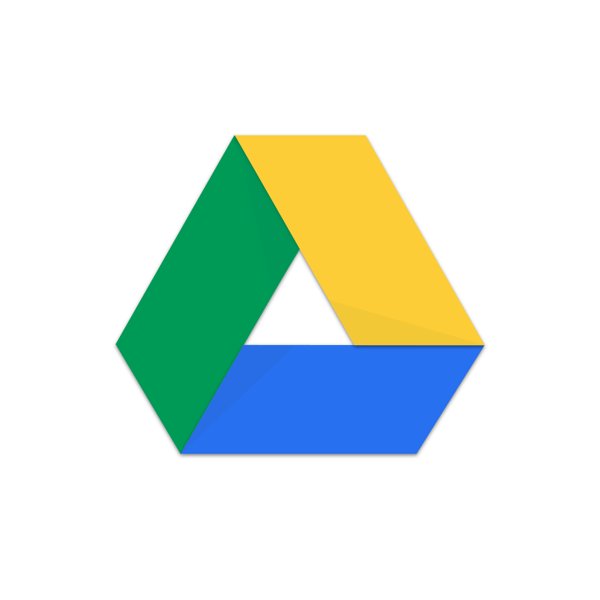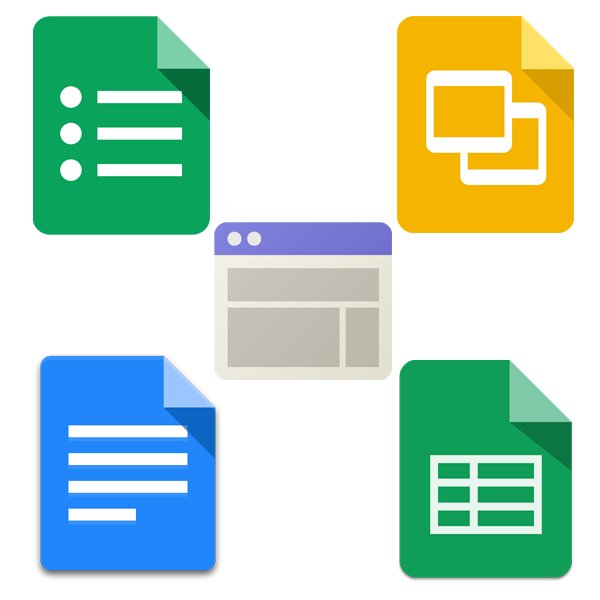G Suite, or what used to be Google Apps for Work, is a cloud based set of productivity and collaboration applications. It allows your company to work faster and more efficient. It's simple and affordable for companies of all sizes; it's evolution in technology and revolution in the way your work.
1. Communicate

No matter how technology changes around us, email is dominant way of how we communicate in business scenarios. That's why Gmail's speed and convenience are great assets in your today's work. And to extend email type of communication further, you have Hangouts for chat and live video, Calendar to organize your busy schedule, and Google+ as your internal business social network.
2. Store

30 GB of always accessible cloud based storage, shared among your email, files, and photos. And if that's not enough, for just twice the money, you get 30 times the increase and enjoy 1 TB of storage. Or simply forget about the storage and go unlimited (if you have more than 5 accounts)
3. Collaborate

Remember the times of sending attachment to your colleagues? Wish there could be an easier way? How about instead of sending those files via email, you and your team can collaborate in real time on your documents, spreadsheets, and slides? You can with Google's set of office suite applications. And needless to say, all your documents are always with you on your Android or iOS mobile device (tablet or phone).

General FAQs
What makes G Suite for Work different?+
Five areas set G Suite apart, which is why research firm Radicati named G Suite the leader in cloud business email. A summary of the report can be found in the related resources.
A cloud pioneer. Google is recognized as a trusted name and an industry leader in reliable cloud infrastructure.
Built for the cloud. G Suite was designed as an entirely cloud-based service from the ground up, so IT departments don’t need to spend time and money maintaining any desktop components.
A complete package. The suite includes file storage and sharing with Google Drive, real-time collaboration with Google Docs, video meetings with Hangouts and professional email with Gmail, all for one single price.
Consistency and comfort. G Suite users enjoy the same experience across different devices, operating systems and browsers, and many employees already use Google products at home.
Offline support. Gmail, Calendar and Google Docs let users view, edit and create content when they’re not on the Internet, syncing automatically when they reconnect.
Why should I pay for G Suite when Google offers similar products for free?+
With G Suite, you'll receive a number of additional business-grade services not included in the free consumer product, including:
- Professional email at your domain,
- Additional storage across Gmail and Drive,
- 24/7 phone and email support,
- 99.9% guaranteed uptime,
- Interoperability with Microsoft Outlook,
- Enhanced security features, and
- Full administration of all user accounts.
Is G Suite compatible with the email client I use today, such as Outlook?+
Most probably yes. In addition to accessing G Suite mail from the Gmail web interface, you can send and receive mail from your favorite desktop client. Depending on the client, you can use either the IMAP or POP mail protocol. If you’re switching to Google Apps from Microsoft Exchange or some other Outlook service, you can use Google Apps Sync. This is a plug-in for Outlook 2003, 2007, 2010 or 2013 that lets you use Outlook to manage your G Suite mail, calendar and contacts—along with your Outlook notes, tasks and journal entries.
When You Fill Out This Form:
We'll contact you within 24 business hours.
We'll discuss your needs.
You'll receive a quote for this service.
Don't Like Web Forms?
No problem, contact us by email or phone.
We Won't Spam You
By filling out this form, you won't be subscribed to any mailing lists.
